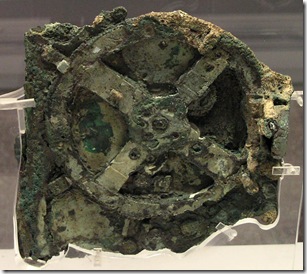TADDM, which I've written before, is IBM's detective. It sniffs out and find everything that's connected to the network, interrogates them to find out what's inside and maps out the relationships (who's talking to whom and and who's ignoring whom).
Now, the first time I have to remove the dewy-eyed look from users is when I inform them that, yes, TADDM can discover their unique 3rd-party/in-house applications, BUT... we have to tell TADDM what these products look like so that it can "tag" them correctly. They want TADDM to be able to "guess" or even divine which of the thousands of processes and files scattered around the network are related to which business service they run. TADDM can do that, but it need at least a little help!
The other thing they don't like is when I have to feed TADDM the TCP/IP address scopes and user/passwords of their servers. They say "Why do I need to enter all these things if TADDM is supposed to discover everything by itself?". I must then reassure them that they do not want TADDM to be able to hack into their secure systems without the right credentials!
OK, so TADDM requires the users/passwords for the servers (it can also get the passwords from the organizations LDAP repository) but why does it need me to enter the IP addresses?
For two good reasons: (1) So that you can give each IP list (scope in TADDM jargon) it's own set of credentials, i.e. IP 200.100.10.1 through 200.100.10.255 uses a certain user/password and a another scope uses a different one. (2) So that you can schedule discoveries by scope, and that way you're not doing the whole net each time.
But... what happens when an organization doesn't know how to split up it's IP range into separate environments? Say there are 200 servers, split into development, test, production and DRP environments all overlapping in the same IP scope. If I tried running discovery, I'd get tons of errors for using wrong user/passwords and I'd get a lot of unneeded devices when all I want is the production environment, unless I matched up IP to environment first.
Of course, the whole point of TADDM is that you don't necessarily know your network ahead of time. So what do you do?
The solution is a bit iterative, but you're not running into errors on the way and you don't need to feed TADDM any knowledge about the way the network is mapped ahead of time. What happens is that TADDM creates something called Logical Connections between devices when it detects that one uses the other. Logical Connections can be between application servers and databases, web servers and storage area network devices, switches and ... you get the idea). Now, once TADDM has completed a discovery, it maps out the Logical Connections between items which lie within it's scope. LC which go beyond the scope are listed, but not displayed on the map.
To leverage this, what we do is get our nose under the tent - we discover a few servers we know are in the right environment, find out which servers they are connected to, add them to the scope and continue till we have discovered everything in the environment we are interested in.
There are two ways of listing Logical Connections outside of the TADDM GUI:
- ./api.sh -u username-p password find LogicalConnection
api.bat for Windows users. - Connect to the database and run select distinct fromip_x, toip_x from logcconn
The first command will create an XML file with all the data, the second regular SQL. I used the second command (slightly modified to ignore 127.0.0.1 and output the data nicely) to create a script file which runs loadscope after the select and then I get an ever expanding scope which contains items which are talking to each other.
Don't forget that loadscope looks for a file formatted like this:
IP_Address/range/subnet, Exceptions, Description
IP_Address/range/subnet, Exceptions, Description
IP_Address/range/subnet, Exceptions, Description
Thanks to Byron for the help :)
Hmph.... This post seems a little too long for what I wanted to say... I hope I was clear in the end.
-- Robert



